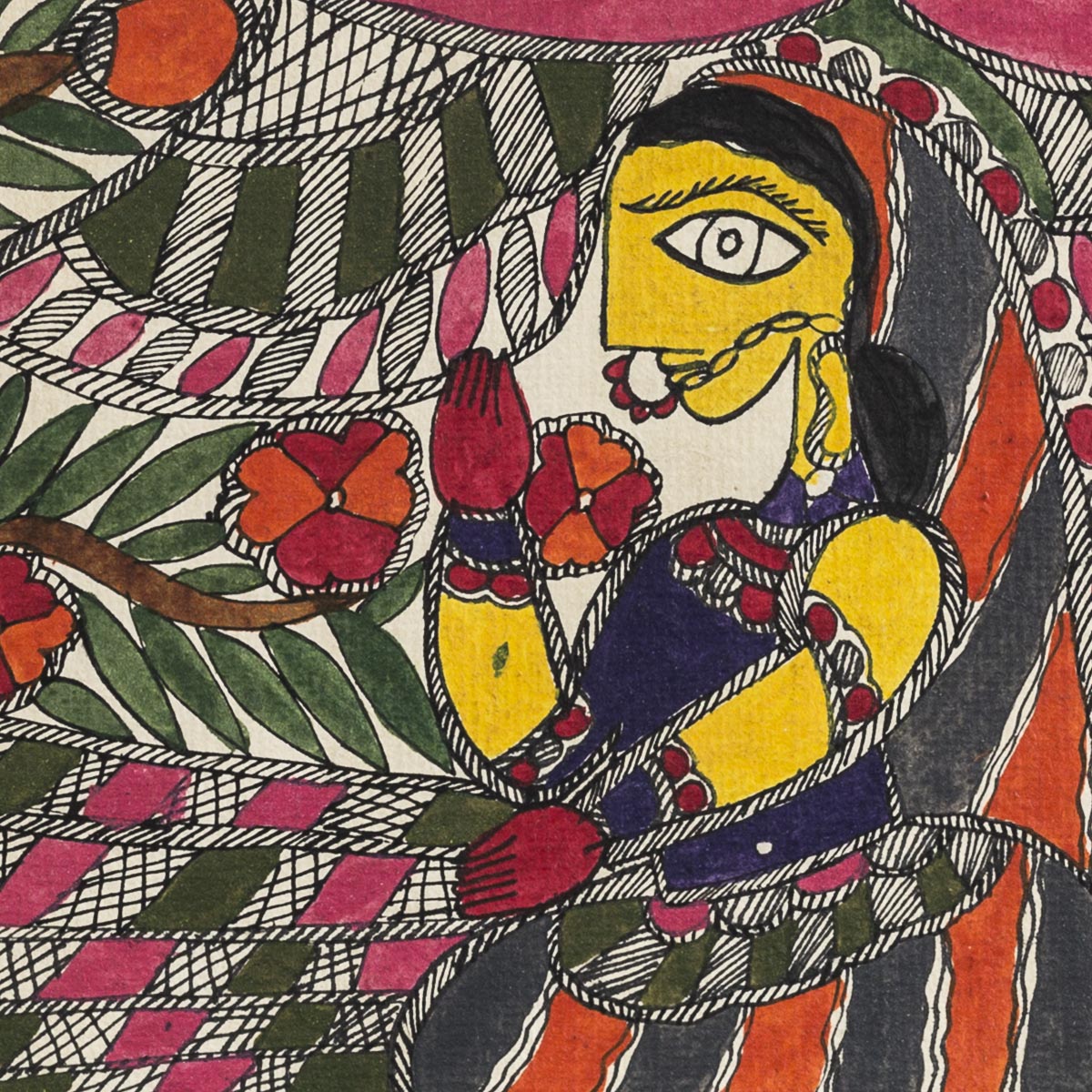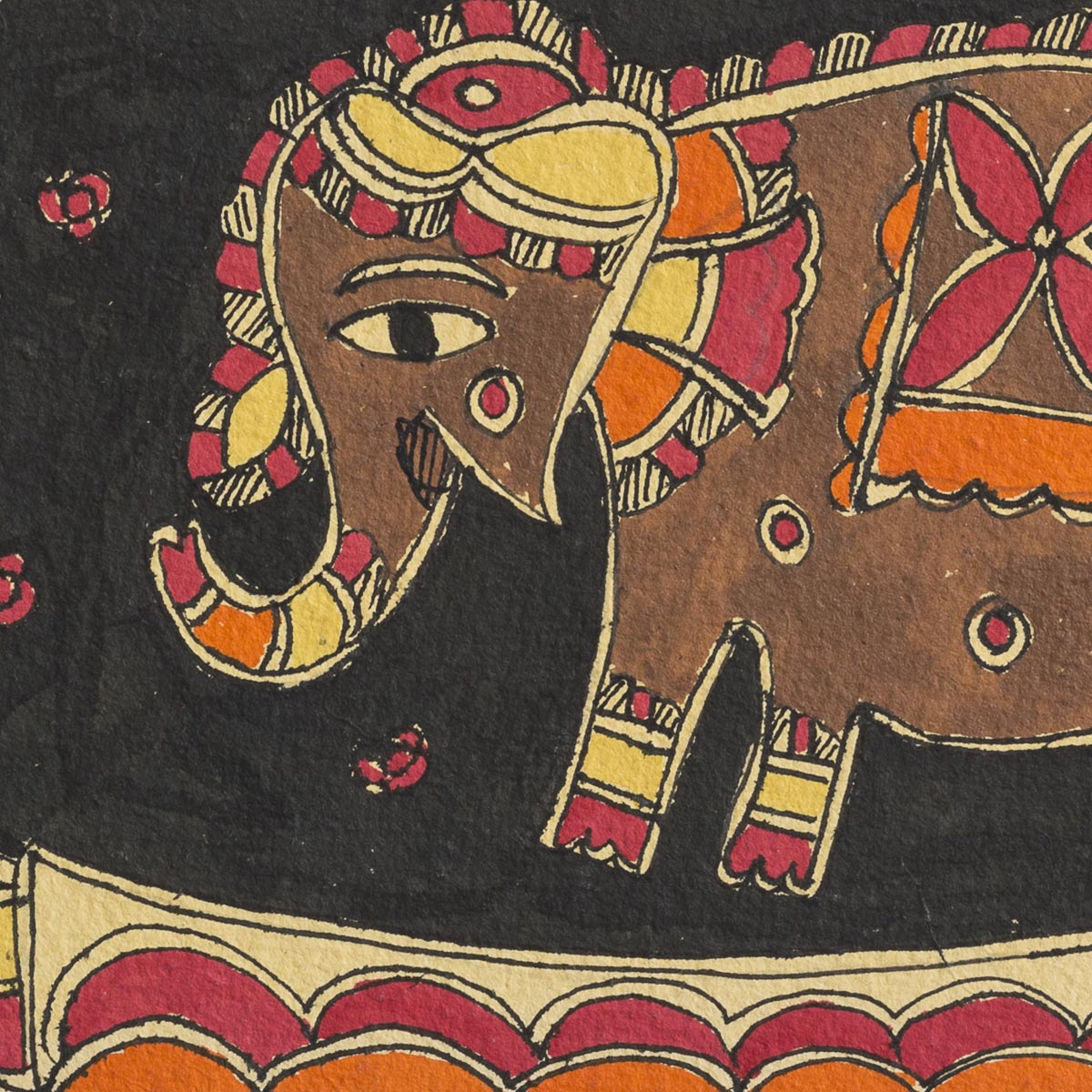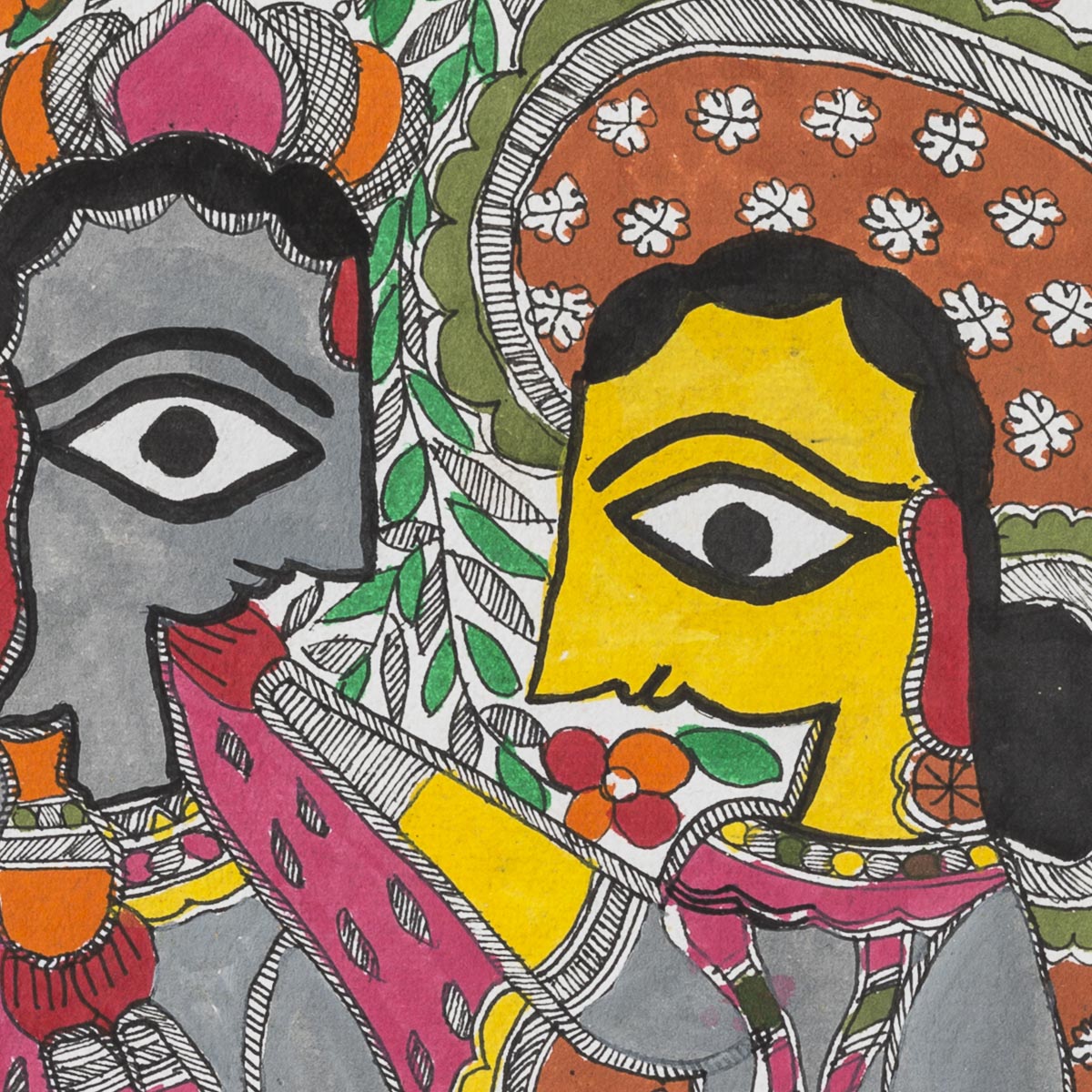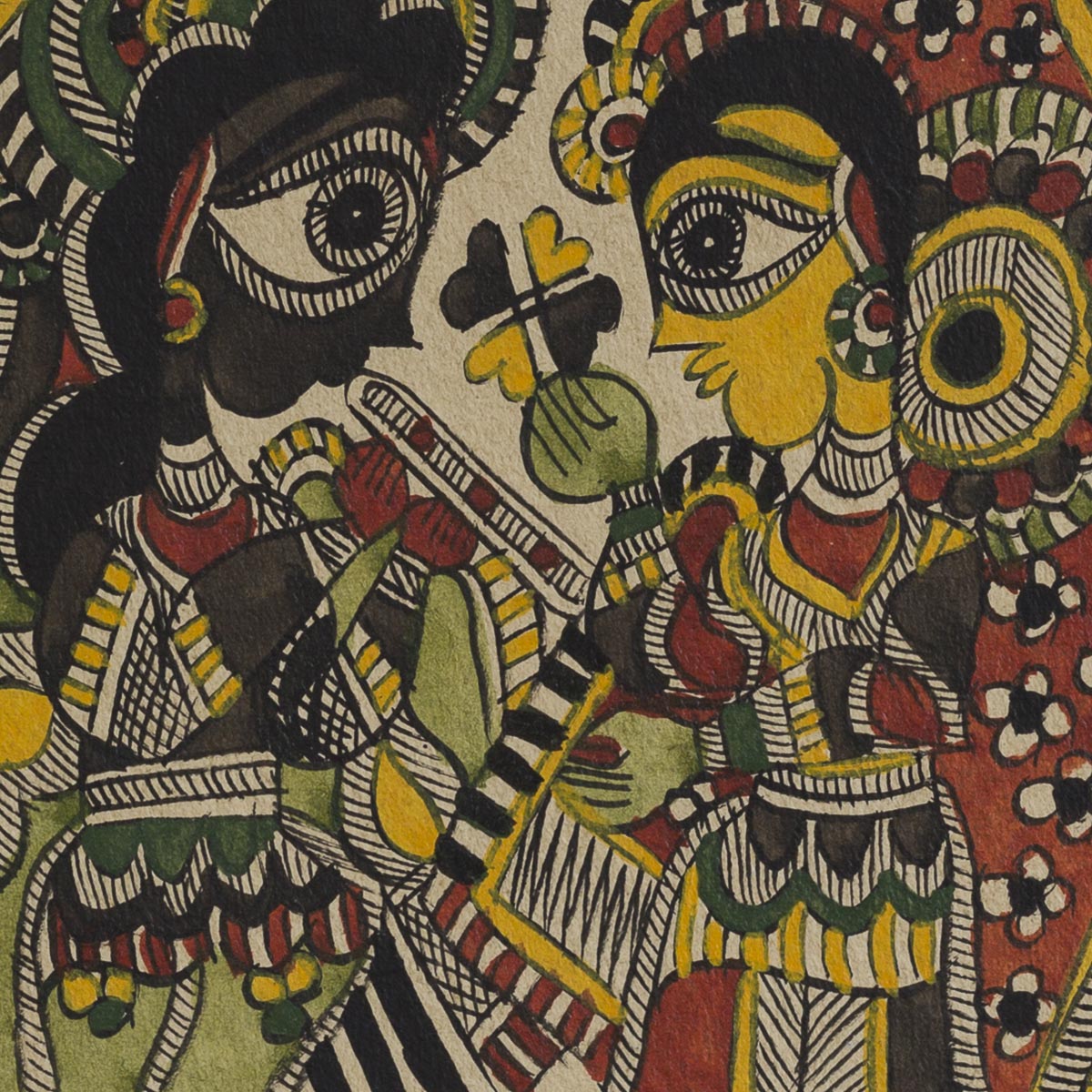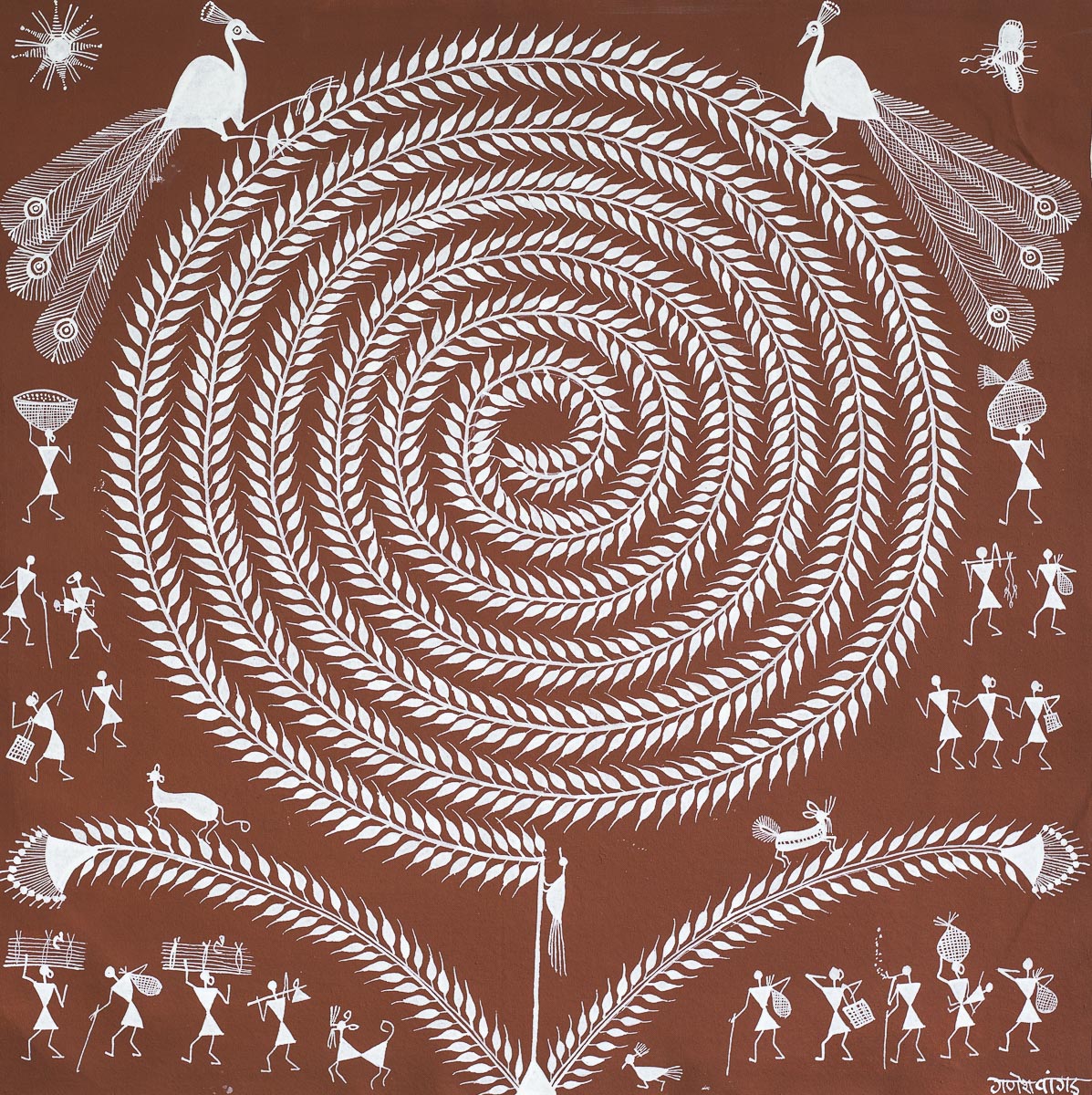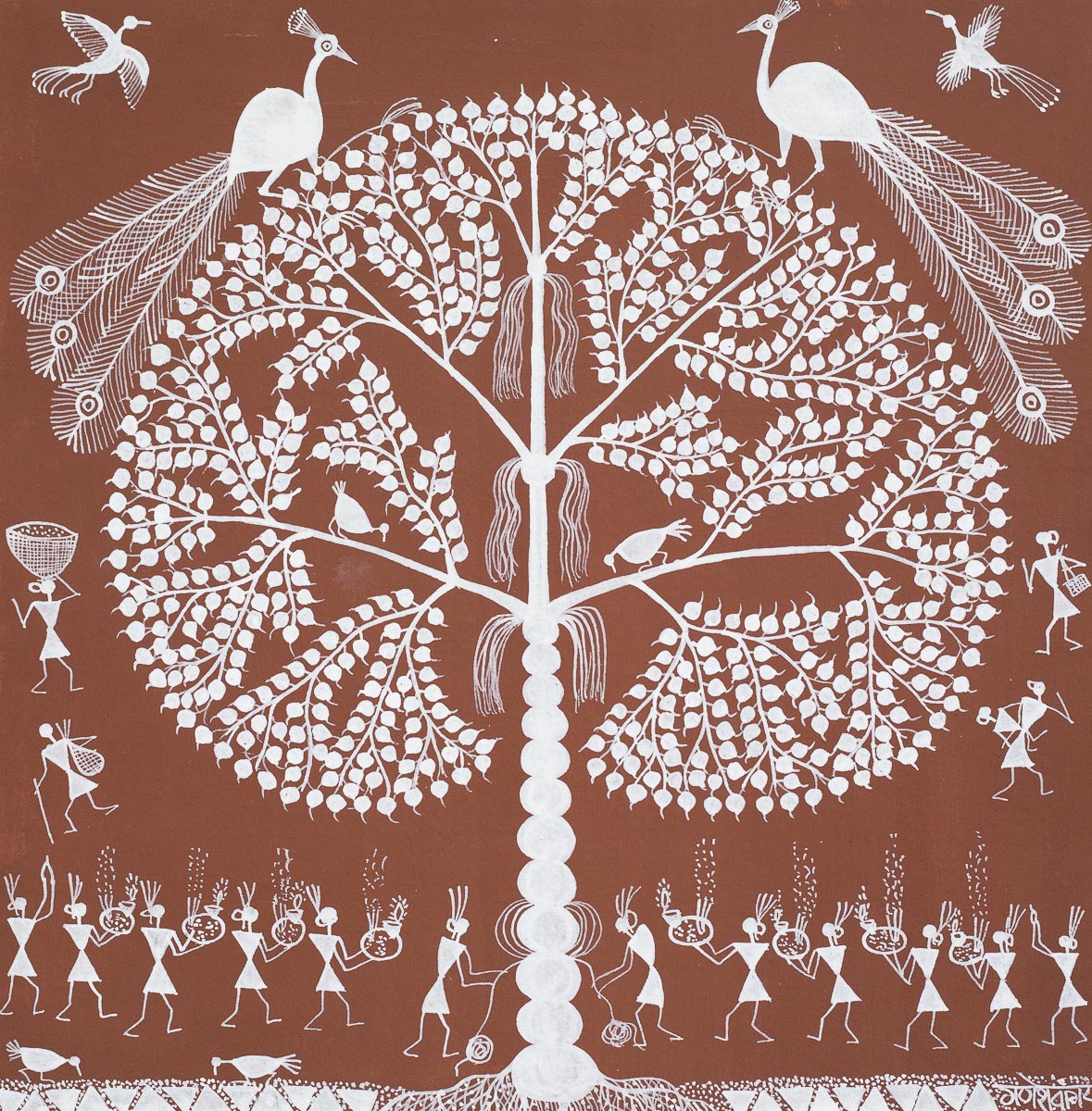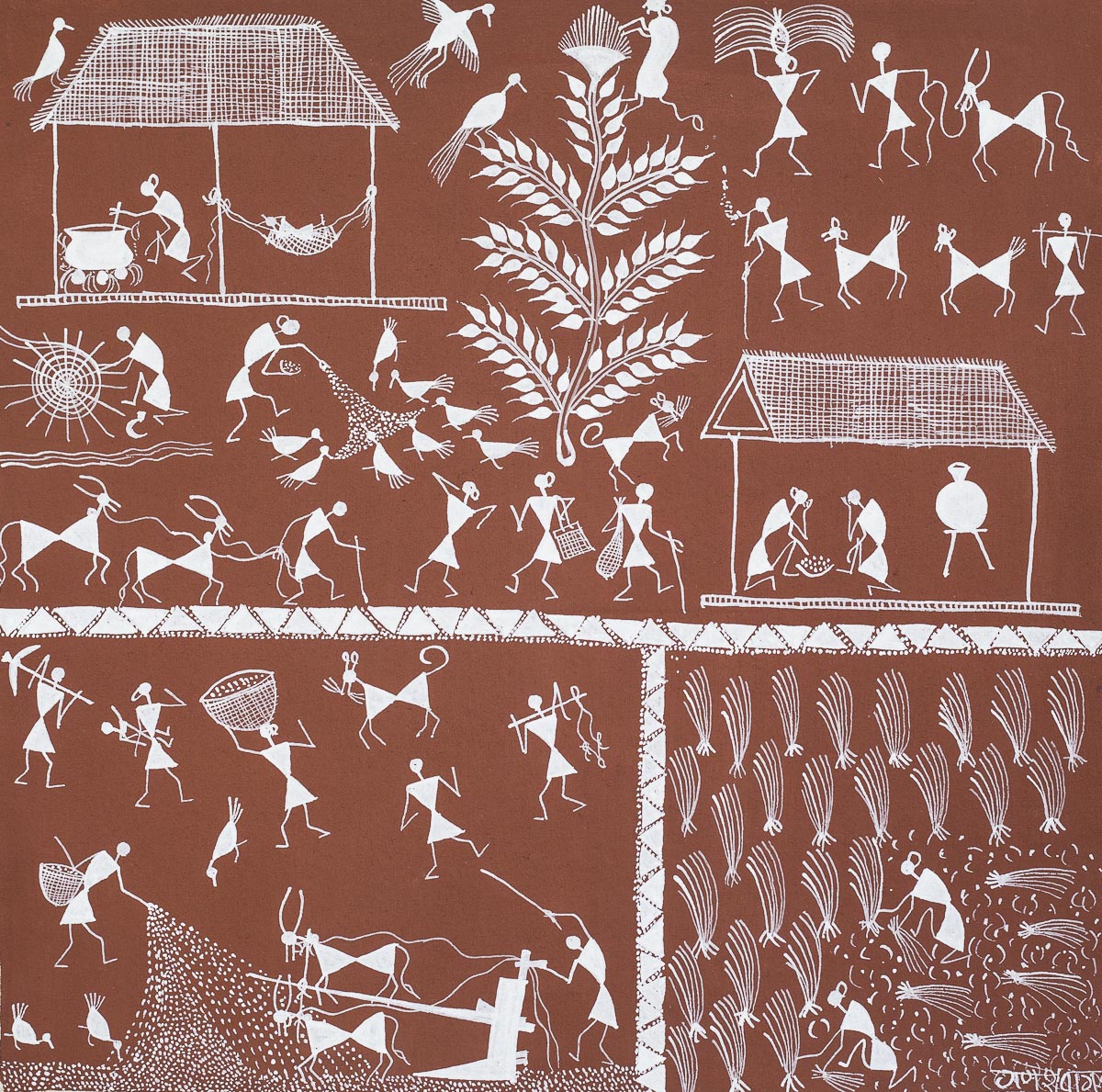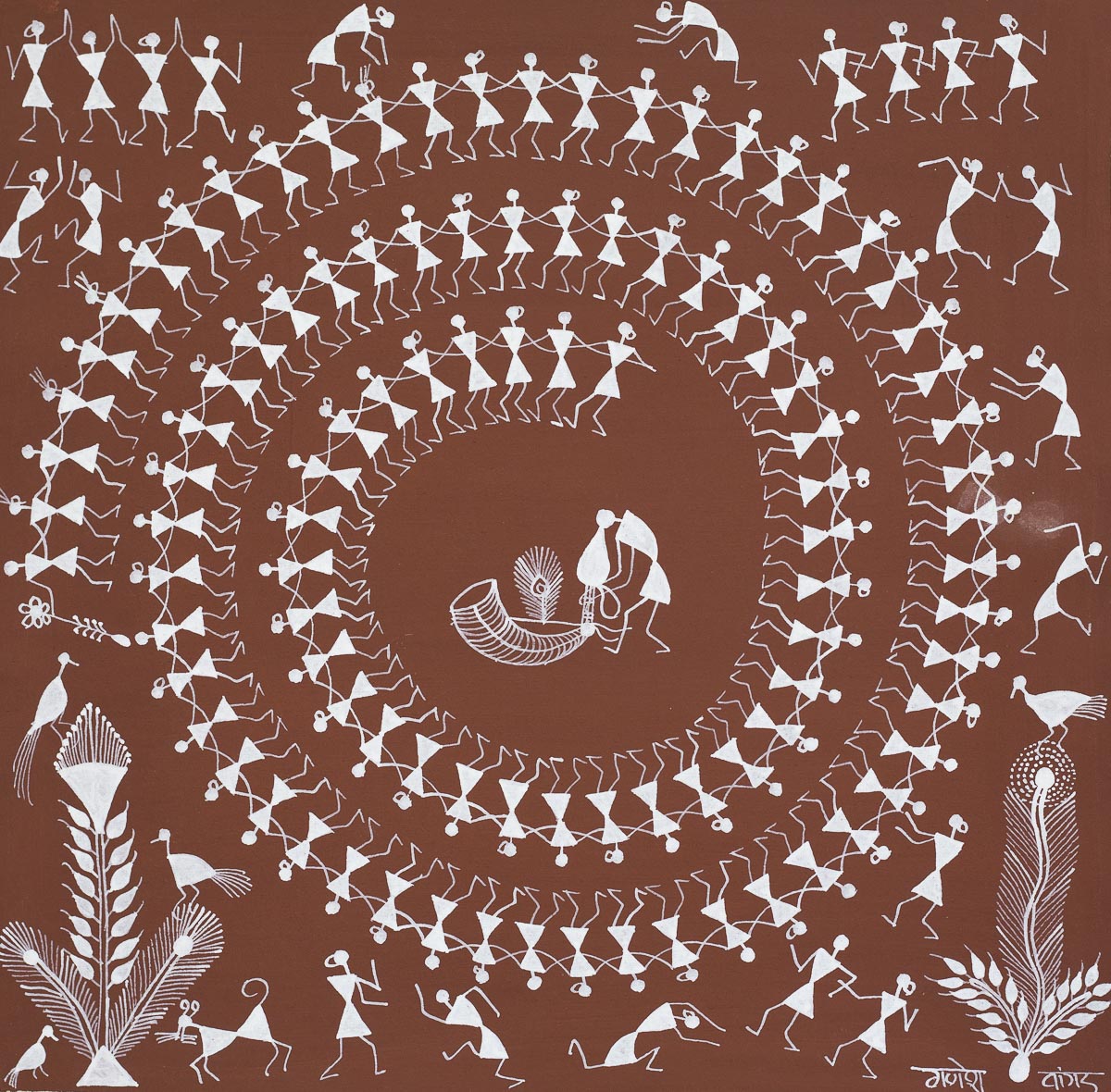In 2014 I was contacted by a company Delhi6 . They wanted my help with a new project to introduce two unique forms of Indian art to the UK. Photographs were needed for the website. The paintings on handmade paper and on cotton were delivered to me and I set about trying to get accurate colour reproduction. I attached the works to a backing board with tape, pins etc and put the board on a tabletop easel next to natural light.
Careful handling of the works was paramount and seeing them close up was a rare treat.
The styles, opposite in colour and in design, were both were used to depict similar events and ceremonies in different parts of India. After each event, the paintings would fade or be washed away by rain.
Madhubani (or Mithila) painting is a style of Indian painting, practiced by women in the Mithila region of Bihar state, India, and the adjoining parts of Terai in Nepal. They were traditionally made on the walls of houses to depict various events such as weddings or harvest. The bright colours were produced using natural dyes from vegetation found in the forest.
Warli painting was also used to decorate homes in the villages. The Warli tribes have no written language so used the paintings as a very basic graphic vocabulary. The paint made of rice paste, water and gum was applied to earth and cow dung walls thus producing a brown and cream palette.
After the Indian government recognised both as important art forms, the artists were encouraged to make their paintings on paper and cotton to preserve the heritage.




